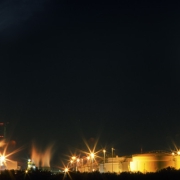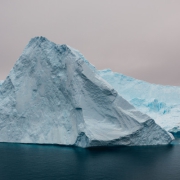Africas energy master plans – any good in them
When I was in my stormy Teenage years the world was a messy place and someone, somehow had to bring some semblance of order into it (frankly, who wasn’t an idealist at this age?). At least, that’s what I thought. It was the time when I spent entire weeks musing about the great scheme of things and how the world would be a better place, if only…
Age had a strange effect on me. Many said it would calm me down (which – to my greatest astonishment – it did not). What it did, was developing a taste for chaos and the incredible diversity and beauty that comes with it.
You must think that I have spent too much time smelling some toxic flowers by now. But worry not – my point will become clear as the plot unfolds.
I have seen many grand plans in my life, but with age, it became increasingly clear that those grandiose intentions were all destined to join all the other “dreams in planning” in the dumpers of history. But in no other area was this as obvious to me as in energy especially so in Africa.
From where does this desire – to get rid of all that makes us miserable in one huge “one solution for all” plan – stem? Simply from the very understandable feeling that problems should be solved once and for all, to be able to lean back and enjoy the fruit of one’s labor.
We had a system – that had perfected this dictum to the maximum – at work for almost a century to our east. The Soviet Union and its vassal states were living to the beat of the 5-year plans. One herculean effort once in 5 years and all problems shrivel like fresh-cut flowers in the scorching sun. That, at least, is the theory.
In reality, none of those plans ever worked. The Soviet planners could of course never admit that their grandiose plans were any less than total perfection so they made them look perfect to the outside world – and to their populations. The reality was bent to the figures of the 5 years plan. The consequences are history. It has cost generations and laid waste to a major part of the planet.
Today, the single biggest problem most African governments face is providing stable electricity to their population and industries. There is no economic development without a stable power supply when you need it and at fair prices. The task is monumental and most African governments search for salvation by trying to replicate the Western world’s energy infrastructure through grandiose master plans.
I have seen many of those plans and they have never worked. Not because they are African. This stuff cannot work if you put it in Europe or North America. Because grand Master plans generally are impossible to realize. If they are any more than a vague set of general guidelines, they lack flexibility, which is necessary to deal with unforeseen events or twists and turns in the market or the international energy scene.
But if they don’t work the way they are intended, how can the circle be squared?
The solution is surprisingly simple and follows a couple of stone-old truths.
- First, only bite off what you can chew at a time.
- Second, take one baby step at a time but take the step.
- Third, watch how your last steps have worked out, where they failed, adapt and improve.
Master plans are by nature too big, too stiff, and cost a fortune to implement. Results are being projected so far into the future that they become completely un-planable. But this also entails no real controlling and hence no accountability as everything is mush and excuses for bad performance are galore.
The cost stacks for implementing those Master plans are so big that financing becomes a huge concern to the point of almost impossible. Anyone who is not able to commit billions need not apply. As no one would be able to finance this alone, clubs must be created that follow complex rules which are a pain to establish in the first place. The project generally is so big that it instantly becomes very political which means that it messes with lots of vested interests. Those established interests will throw sand into the gearbox to derail the project as it threatens their livelihoods the way they are set up.
In the end, the project becomes cumbersome and there are too many interested parties for the project’s good so it slowly fades into oblivion just to be replaced by the next grand scheme. And we take another turn with the Mad Hatter.
We have seen above what the guiding principles of a solution must be. My dad always told me that a given problem usually did not arise overnight so you will not solve it overnight.
First, the decision-making bodies in those countries must try out different things to see how they work in the real world. That means micro-projects in different areas for testing. And a special legal environment has to be created for the micro-projects to work. If, for example, someone wants to use a flare (remember that those huge flames are a burden to the environment of the country in the first place and also cause costs to the one who flares) there must be clear rules for the project developer to get the economic benefit of the gas.
The flare owner must be incentivized to not stand in the way of the project by suddenly asking exorbitant prices for the feed gas or other impossible-to-fulfill preconditions. It helps if the country regulates the price for feed gas from such flares to below 0.5 USD/MMBtu – remember that the gas was a nuisance and a cost factor to the gas producer in the first place and that he is better off now. Besides, there must be rules on what the gas producer must do to enable the project access and unhindered exploitation of the gas.
This (and more) allows micro-projects to get into their shoes. If one or some of them fail there are still the others and every little project in itself will not represent billions of investments but rather millions. Much easier to arrange and finance.
The principle number two – one baby step at a time. Babies also learn how to walk by first sitting, then standing, then slowly walking by yanking their bodies along something solid they can grab and only at the end to roam free. If the baby starts by wanting to walk free from the start is going to topple over, lose its heart, and never learn to walk. Nature has given us the right kind of reflexes from the start.
The second part is that the baby takes the first step, and then the second until it fully walks.
The same is true for those energy projects. We are not in a world of proven energy dynamics here but rather in the messy world of reality. Ivory tower thinking is misplaced in Africa. It’s always misplaced but it matters less in the plush Western world where monstrous overcapacity to deal with problems looms.
Pick a relatively stable flare with no funny stuff in the gas first. That takes away the need for flare stabilization and extensive refining of the gas. There are tens of thousands of those flares so just don’t pluck the worst. Make sure that distance is not a problem, that there are good road connections (you want to transport that LNG and that will mostly be by road trailer), and that security is acceptable. Make also sure that you pick a flare in a community that will love you for snuffing it out so you get local support. That’s important.
Having a first mini-project will also lower shields and enable you to make it happen quickly. You get out of the drawing room and into real life. People can feel and see the benefit of your micro solution and if it works well, others will want it too. It’s opening Pandora’s box, but just a little.
When you have played the first two principles correctly you will reach the phase when you see how you have fared. Small-scale trials will have given you loads of information will show you how the technology fares, will show you how to deal with communities how the driver will cope with the workflow, or if the trucks can cope. It will give you first experiences in logistics (you might well develop your system that works better) and your staff can get their first bumps and black eyes on a host of problems in miniature.
Now you can go larger – and you can go a little more complex.
This is what is being done with all complex projects whether it’s designing a new tablet computer revolutionizing the world or building up the space station. When the iPad was designed, the first model was simple, had not even cameras and it was without any fluff. Apple wanted to see if the basic design was working.
Then with every successive model came a little more complexity and now this blog post has been written on the latest version with lots of little gimmickries that make a techie like me smile.
Africans should toss all those Master Plans where they belong – to the dustbin. They don’t work anyhow – judge by the results. Or do you have the impression that electricity has gotten any better over the last years in Lagos, Luanda, or Dar Es Salaam?
A framework for projects that will grow into the current reality and allow local stakeholders to jump in realistically would do much better. Anyone know my ideas on small and mid-scale LNG in Africa. Lay the framework for this to happen and then watch the scene unfold.
Africa needs some more bottom-up instead of the usual top-down mentality. Top-down is the way big corporations do it. But Africans themselves know better – just provide the framework and leave the actual solutions to others. Good things will happen then.


















Having spent 3 years living in Cote D’Ivoire, I can attest to the challenges with keeping the power on. Strangely enough, Gas as fuel is much simpler than using distillate fuels and hydro and whatever else may be included in this year or yesteryear’s “Masterplans”.
Decoupling from all the vulnerable links in the energy supply chain could take African, and most other Power/Energy systems very far toward a more sustainable and fundamentally more responsive energy system.
I’ve just read about a small scale LNG project for Haiti…if Gas can put Haiti back on its feet then Lagos, Luanda and Dar Es Salam can fly.
Its not a question of technical feasibility. Its more a “Am I ready for the long hard grid?” sort of thing.
Politics are what prevents any of this. Back in the day when I was working down there we advocates the Grand Inga run of river hydro development which could generate enough electric power for all of southern Africa from one place. Of course, it didn’t stand any chance due to politics. The technical answers are there but politics will always kill them.
Leigh, I can only agree. There are technical solutions for many things that are wrong on this planet. But that also supposes a perfect world. I cant see that. Small is beautiful.